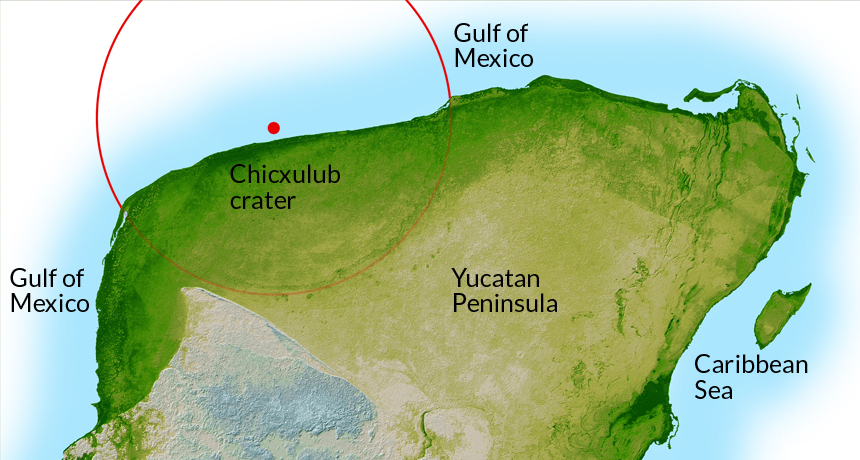Asteroid strike spurred quick chill that led to dinosaurs’ demise
Ocean temperatures fell 2 degrees after Chicxulub impact

BIG IMPACT New evidence of global cooling after the asteroid impact 66 million years ago in what’s now Chicxulub, Mexico, supports the idea that photosynthesis stopped. The lack of food coupled with acid rain and greenhouse gases drove most organisms to extinction.
JPL/NASA







